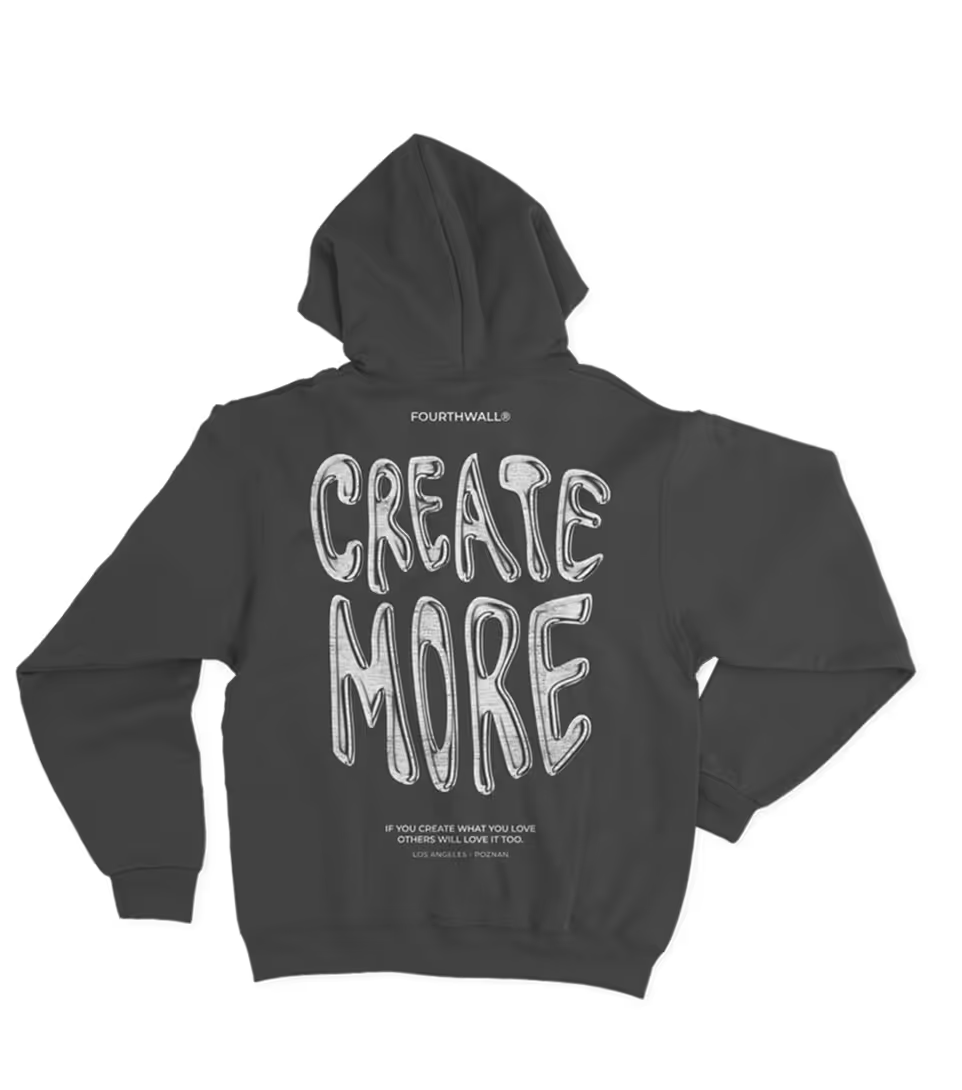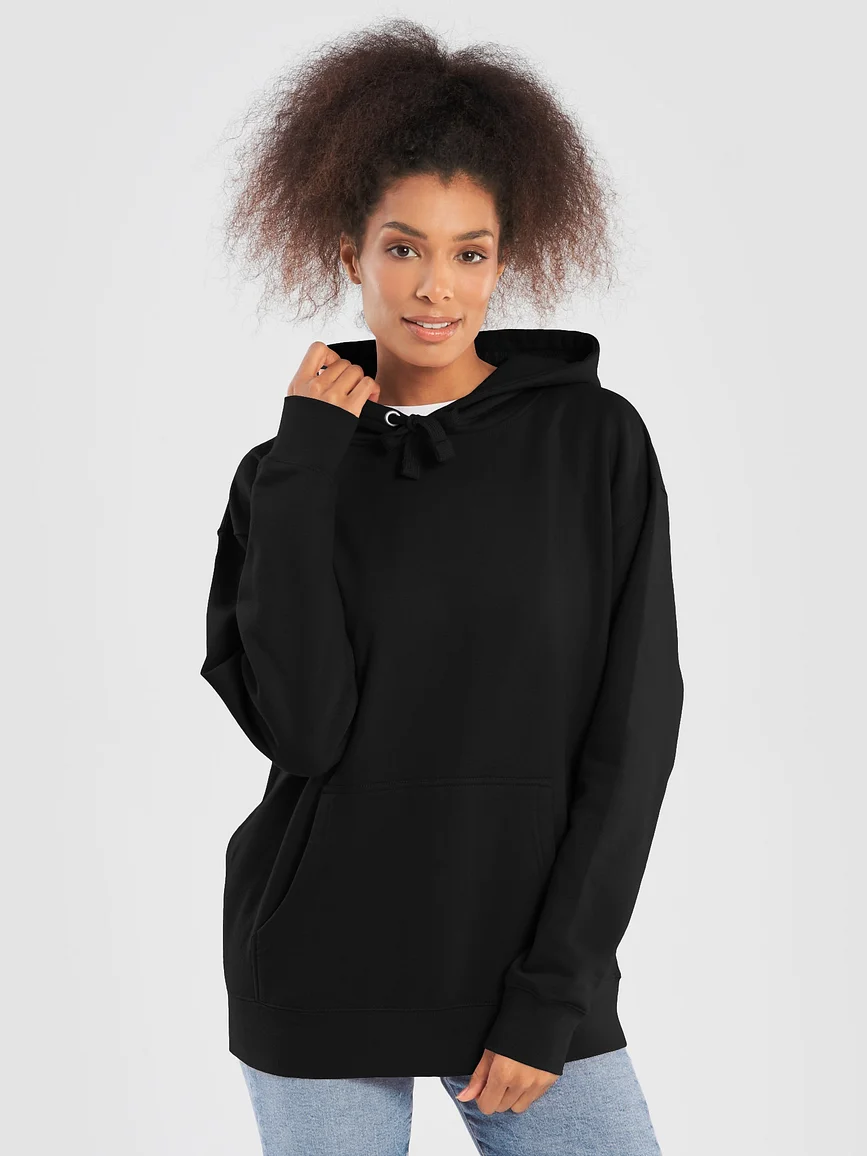Live Streaming for Events: An Essential Guide for Creators
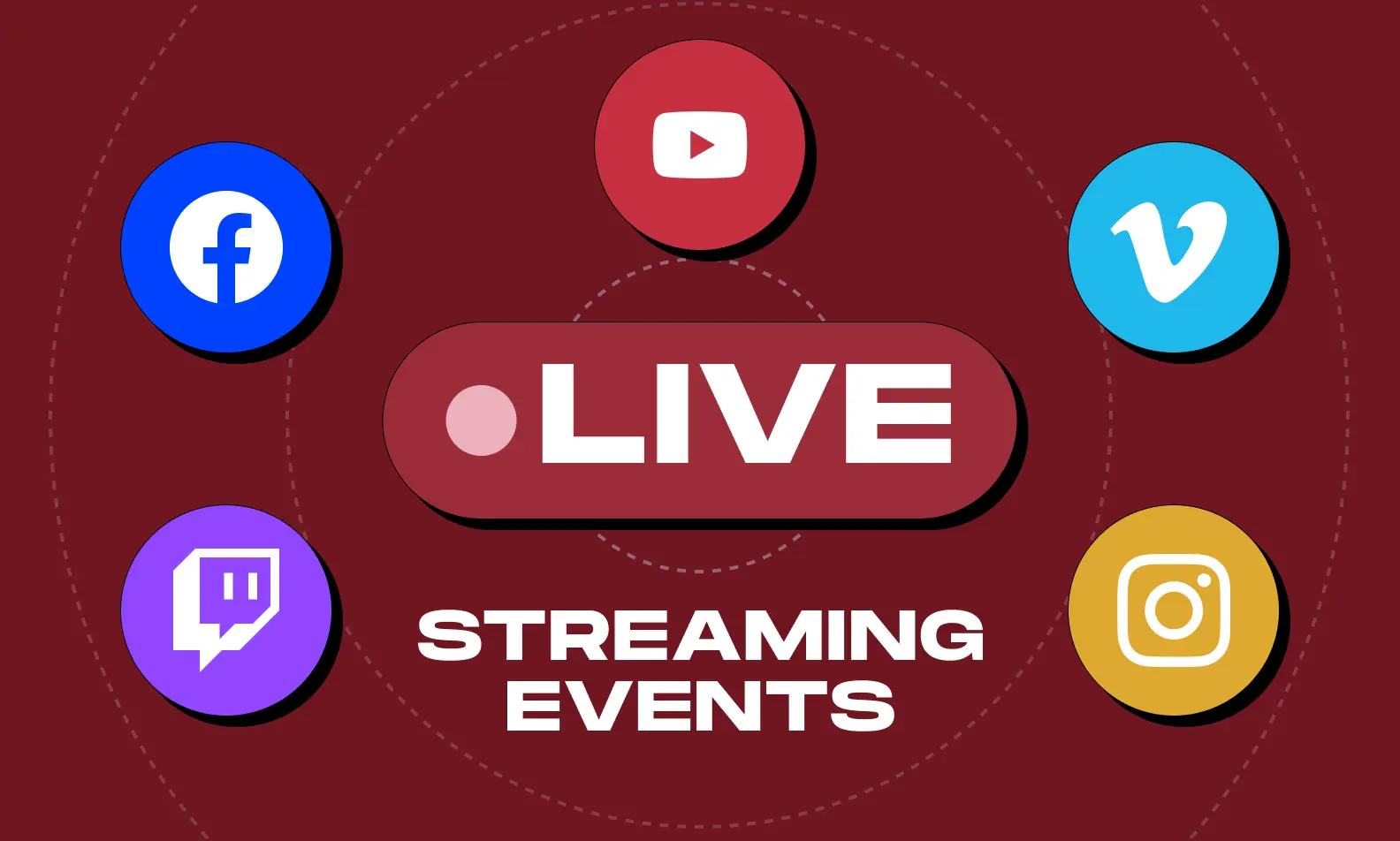
In today’s event landscape, incorporating live streaming into your events is a powerful way to expand your reach and create an engaging experience for those who can’t attend in person.
Live streaming allows creators to host events that connect with wider audiences, combining the energy of live gatherings with the accessibility of digital platforms.
Whether you’re hosting a product launch, concert, Q&A session, or workshop, streaming your event online ensures that fans and followers worldwide can join the experience.
In this article, we’ll explore the essential elements of hosting successful live events, from choosing the right platform and equipment to strategies for maximizing audience engagement and interaction.
So if you’re new to live streaming or just looking to refine your technique, this guide will equip you with everything you need to turn your next event into an impactful, interactive experience.
Why Live Stream an Event?

Content creators have a powerful tool in live streaming that can enhance their brand and engage their audience in dynamic, impactful ways.
Hosting a live event online allows creators to reach viewers beyond physical barriers, engaging both loyal fans and potential new followers.
By offering direct, real-time interaction, live streaming can create a deeper connection by making your fans feel like they’re part of an exclusive experience.
Here’s how live streaming can transform your brand’s outreach and connection with your audience:
- Expand your reach: Live streaming allows you to connect with a larger, global audience that might otherwise miss out on your content. By broadcasting your event online, you give fans worldwide the opportunity to participate from the comfort of their homes. This increased reach can help grow your fan base, boost brand visibility, and make a lasting impression on new viewers who may become loyal followers.
- Boost audience engagement: Real-time interactions through live comments, Q&A sessions, and chat features enable you to engage directly with your audience, creating a sense of community and inclusivity. This direct engagement helps viewers feel like part of an exclusive experience, which can enhance loyalty and encourage them to interact more frequently with your brand. Personalized responses also make viewers feel valued, increasing the likelihood of them returning for future live events.
- Increase revenue potential: Live streaming is not only a powerful engagement tool but also a direct revenue channel. Creators can offer paid access to exclusive live events, introduce limited-edition merchandise, or launch special product offers during the stream. By combining real-time interactions with product promotions, you create a unique, time-sensitive shopping experience that can drive sales and enhance fan investment in your brand.
- Break down barriers: Not all fans can attend in-person events due to health, location, or financial constraints. Live streaming eliminates these limitations, making your event accessible to a broader audience regardless of physical location or budget. By reaching these previously untapped fans, you build inclusivity and strengthen your brand’s connection with a diverse, global audience.
- Gain audience insights: Analytics from professional video hosting platforms provide valuable data on audience demographics, engagement, and preferences, helping you understand your viewers on a deeper level. These insights enable you to tailor future events and content to better meet audience interests, enhancing their overall experience and making each interaction more relevant and meaningful.
- Encourage in-person engagement: Live streaming with features like crowd shots or live shout-outs motivates in-person attendees to interact and be part of the online event. This creates a dynamic blend of live and virtual participation, bridging the gap between physical and digital experiences. This dual engagement strategy can also create a more memorable event for those attending in person, as they get to experience the excitement of being featured on the stream.
- Engage your virtual audience: Virtual attendees can feel just as connected as in-person viewers when encouraged to participate. Prompt online viewers to interact by tweeting, commenting, or answering questions throughout the event, creating a sense of camaraderie among online viewers. By actively involving your virtual audience, you reinforce the inclusive atmosphere of the live stream, encouraging them to return for future events and share the experience with others.
- Share special moments: Live streaming is a valuable way to share major announcements, product launches, or Q&A sessions with a global fan base. This extended access to special moments means fans don’t miss out due to geographical or time constraints, amplifying the event’s impact. Sharing these moments live helps strengthen the fan experience and allows viewers to feel more involved in key moments of your brand’s journey.
Essential Equipment for Live Streaming
To create a professional and engaging live-streaming experience, investing in high-quality equipment is essential. Here’s a breakdown of the must-have gear:
Cameras

A clear, crisp video feed is crucial for maintaining audience engagement, and selecting the right camera is the foundation of a professional streaming setup.
For those on a budget, the Canon EOS Rebel T7 is a solid choice, offering impressive image quality at an affordable price, making it ideal for entry-level streamers.
If you want more advanced needs, mirrorless cameras like the Sony A7 III and Panasonic Lumix GH5 deliver high-resolution video and exceptional low-light performance, ideal for diverse environments and professional-quality broadcasts.
In addition to DSLR and mirrorless options, many streamers turn to high-quality webcams like the Logitech C920 or the Elgato Facecam, which are easy to set up and provide HD video quality suited for close-up or desktop streams.
Webcams are particularly advantageous for solo streamers or those with limited space, as they offer reliable, high-quality video with minimal setup.
To explore more options tailored to your streaming goals and budget, our 10 Best Streaming Cameras for Creators blog provides a comprehensive guide to finding the best fit for your needs.
Audio Equipment

Clear audio quality is crucial for an engaging live-streaming experience, as even high-quality visuals can’t compensate for poor sound.
A reliable microphone captures clean audio, minimizes background noise, and creates a more immersive experience for viewers, whether you’re speaking, singing, or playing an instrument.
Budget-friendly options like the Audio-Technica AT2020 provide excellent sound clarity and versatility, making them ideal for beginner streamers or those looking to enhance audio without a large investment.
For more advanced needs, the Shure MV7 is a top choice, offering background noise reduction, USB and XLR connectivity, and clear audio quality, making it ideal for speech and musical performances alike.
This model also includes intuitive touch controls and an app for additional customization, allowing creators to adjust the sound to suit various environments.
For those interested in exploring more microphone options tailored to streaming, our 10 Best Streaming Microphones in 2024 list includes a variety of top-rated models to help find the perfect fit for any streaming setup.
Lighting Solutions
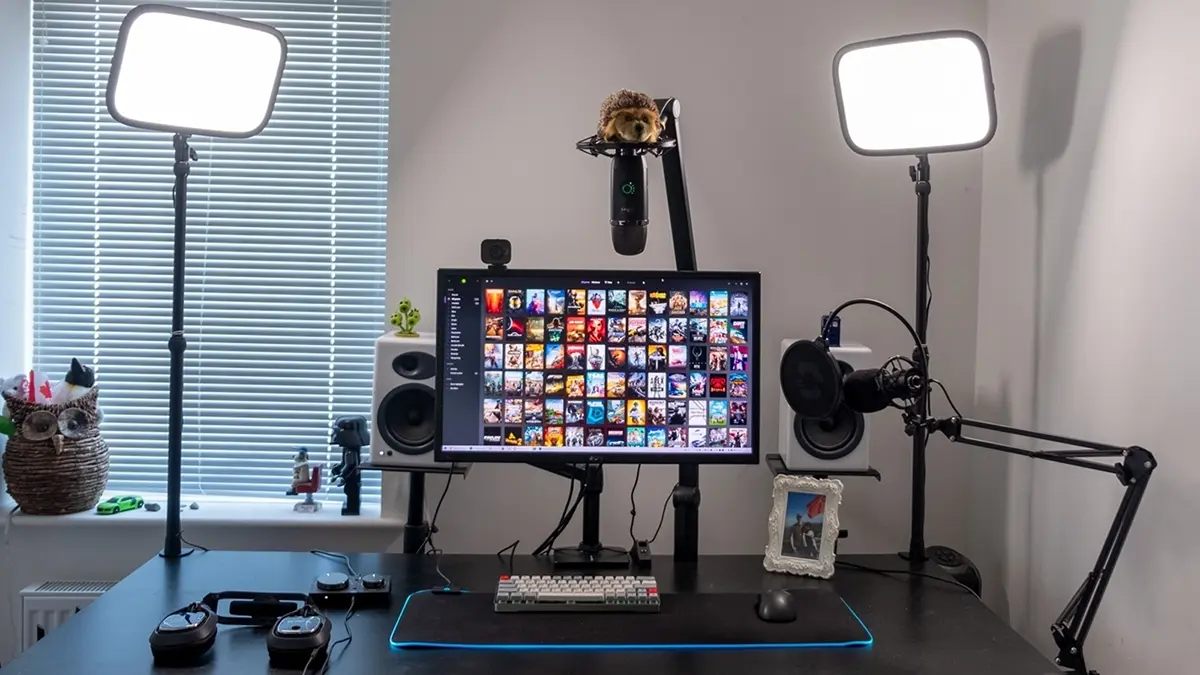
Choosing the right lighting equipment can dramatically enhance the quality of your live stream by creating a polished, well-lit appearance and minimizing shadows that might distract viewers.
For smaller or more personal setups, ring lights are an affordable and popular choice; the Neewer Ring Light Kit, for example, provides soft, even lighting that enhances facial features, making it ideal for close-up streaming like tutorials or personal talks.
Ring lights are highly adjustable and fit easily into limited spaces, offering convenience and effective illumination.
For larger or more complex setups, softbox lighting kits, such as the Fovitec StudioPRO Softbox, offer adjustable brightness and diffusion, creating a natural, professional look that mimics soft daylight and spreads light evenly across the scene.
By selecting the right lighting solution for your setup, you can significantly elevate the visual quality of your stream, making it more engaging and visually appealing for your audience.
Streaming Software and Tools
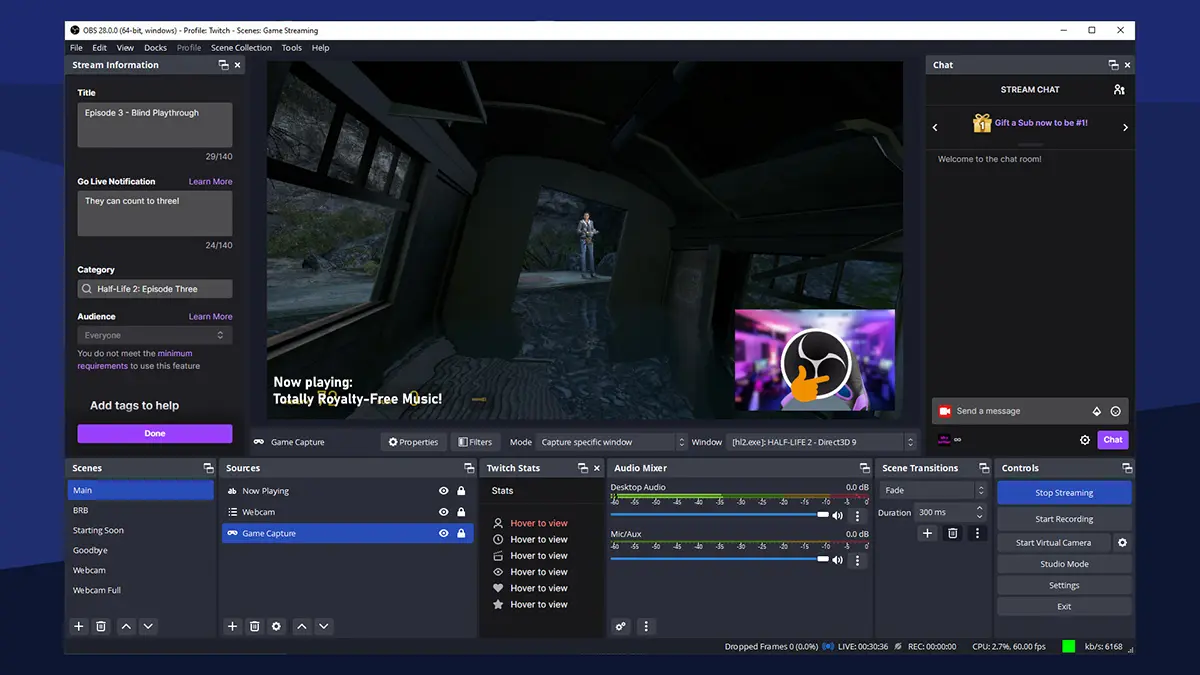
Choosing the right streaming software is crucial, as it directly influences the quality of your broadcast and your ability to engage with your audience.
OBS Studio is a popular choice for beginners, offering a free, open-source platform with essential features for high-quality streaming, such as scene transitions, custom layouts, and plugins for added functionality.
For streamers seeking an all-in-one solution, StreamElements is an excellent choice for platforms like Twitch, YouTube, and Facebook. It offers customizable overlays, real-time alerts for purchases and subscriptions, and interactive tools that boost audience engagement.
If you're looking for more advanced software, Streamlabs offers enhanced tools like multi-platform broadcasting, enabling you to reach audiences across YouTube, Facebook, and Twitch simultaneously. These platforms also support customizable widgets and overlays for an immersive viewer experience.
With Fourthwall’s integrations with both StreamElements and Streamlabs, you can easily set up purchase and membership alerts, creating a memorable, interactive experience for your audience while enhancing your streaming capabilities.
Internet Connection

A high-speed, stable internet connection is a critical component for smooth live streaming, as it prevents lag, buffering, and dropped connections that can disrupt the viewing experience.
For HD streaming, aim for an upload speed of at least 5 Mbps, but if you’re streaming in 4K, consider speeds of 10 Mbps or higher to support the increased data load without interruptions.
While Wi-Fi may work for lower-quality streams, a wired Ethernet connection is ideal for consistent and reliable performance, as it significantly reduces the risk of signal fluctuations and interference that can impact Wi-Fi.
In addition to upload speeds, check your internet service for low latency (ideally under 50 ms) to ensure real-time interaction with your audience.
By pairing a strong internet connection with high-quality cameras, audio equipment, lighting, and streaming software, you can deliver a seamless and professional streaming experience that keeps viewers engaged and enhances your content’s appeal.
How to Live Stream an Event: A Quick Step-by-Step Guide
Here’s a detailed step-by-step guide for successfully live-streaming an event:
Step 1: Identify Your Goals and Audience
To create a successful live-stream event, start by clearly defining the purpose and intended audience. Are you aiming to increase brand awareness, deepen connections with current followers, or drive immediate sales through exclusive product offerings?
Clarifying your objectives will shape each aspect of your stream, from platform selection to marketing strategy. Next, consider who your ideal viewers are—whether they’re loyal fans, new customers, or industry peers—and what they hope to gain from the event.
Understanding your audience’s preferences and motivatiaons will guide decisions on format, such as educational webinars, interactive Q&A sessions, or entertainment-focused streams.
By having well-defined goals and a specific audience in mind, you can craft a live-stream experience that resonates, maximizes engagement, and achieves measurable outcomes aligned with your brand’s broader strategy.
Step 2: Choose the Right Streaming Platform
Choosing the right platform for your live stream is essential, as each option offers distinct benefits tailored to different audiences and objectives.
YouTube Live, for instance, is a top choice for creators looking to deliver high-quality broadcasts to a global audience, with features that support monetization, such as Super Chats and ads.
Facebook Live provides a broad reach, making it ideal for businesses or influencers looking to tap into an established community and increase visibility through social sharing.
For gaming or niche interests, Twitch offers a highly interactive environment with loyal fan bases, making it perfect for events like gaming streams or creative showcases.
LinkedIn Live, meanwhile, serves professional and B2B audiences well, enabling companies to network, share thought leadership, and engage with industry peers.
Many platforms also provide advanced features like white-labeling and embedding, which allow you to host the stream directly on your website, giving you more control over the viewer experience and brand presentation.
By selecting the platform that best aligns with your goals, you can optimize engagement, monetization, and viewer satisfaction.
Step 3: Develop a Promotion Strategy
Building anticipation for your live stream is key to maximizing turnout and ensuring a lively, engaged audience.
Start by leveraging multiple promotional channels: social media platforms, email marketing, and event listing sites are effective ways to spread the word and create buzz.
Next, craft a series of teaser posts or video clips that gradually reveal exciting details about the event, and consider adding a countdown timer to build urgency as the date nears.
To capture your audience's interest early, set up an RSVP page or dedicated event page where viewers can register for reminders—this allows you to build an email list of attendees and send personalized reminders as the event approaches.
Adjust your promotional tactics to suit the platforms your audience frequents most, ensuring they see your announcements and can easily share them.
Remember, a well-rounded strategy that includes countdowns, “save the date” posts, and registration pages will not only boost attendance but also foster excitement and encourage active participation.
Step 4: Plan Your Event Structure and Schedule
Outline the flow of your live event by creating a structured schedule. This includes having specific start and end times, so you know how long each segment should last.
Break down your event into manageable sections, such as introductions, main presentations, guest appearances, and interactive elements like Q&A sessions, live polls, or chat interactions.
Adding these interactive segments at regular intervals keeps viewers engaged and encourages participation, making the event feel more original and inclusive.
Consider sharing the event's schedule with your audience ahead of time. This will help set clear expectations, allowing viewers to plan around specific segments they’re interested in.
By structuring your event thoughtfully, you’ll ensure content flows seamlessly from one part to the next, prevent unexpected lulls, and maintain an organized, high-energy environment that keeps your audience attentive and invested throughout the stream.
Step 5: Prepare and Test Your Technical Setup
A reliable technical setup is essential for delivering a professional and uninterrupted live-stream experience, as it directly impacts viewer satisfaction and engagement.
Begin by setting up and testing all essential equipment, including high-quality cameras for clear visuals, microphones for crisp audio, effective lighting to enhance image quality, and backup batteries to ensure everything runs smoothly without interruptions.
For the best connection stability, opt for a wired internet connection, as it provides more reliability and reduces the chance of buffering or unexpected disconnections.
Next, conduct a full dress rehearsal where you thoroughly test video and audio quality. Make sure to check your lighting setup to ensure that the scene is well-lit, with no harsh shadows or glare, as this can affect the overall clarity of the stream.
Familiarize yourself with any transitions, visuals, or graphics you plan to use during the event to create a smooth, polished viewing experience for your audience. This rehearsal helps uncover any technical issues, allowing you to make adjustments and feel confident when it’s time to go live.
Step 6: Go Live and Engage with Your Audience
When it’s time to go live, kick off the event by warmly welcoming viewers, introducing yourself and any guests, and offering a brief overview of what’s in store. This opening sets the tone and lets viewers know they’re in for an engaging, interactive experience.
Throughout the stream, actively encourage audience participation by inviting viewers to comment, ask questions, and use reaction features, creating a two-way conversation rather than a one-sided presentation.
Keep an eye on the chat so you can promptly respond to questions, call out viewers by name, or acknowledge comments—these interactions make participants feel valued and included.
To sustain interest and make your content more memorable, incorporate visuals like slides, pre-recorded video clips, or branded graphics to illustrate points and emphasize key messages.
This mix of real-time interaction and dynamic visuals not only makes the stream more enjoyable but also strengthens the connection between you and your audience, keeping them engaged and encouraging them to stay throughout the event.
Step 7: Use a Call-to-Action (CTA) for Engagement
Towards the end of your live stream, include a clear and compelling call-to-action (CTA). Whether you’re aiming to grow your community or drive sales, your CTA should be specific and actionable.
Encourage viewers to subscribe to your channel, follow you on social media, visit your website, or join an upcoming event to keep the momentum going.
If generating sales is one of your goals, consider offering an exclusive discount code or special link that’s only available to live attendees—this limited-time offer adds a sense of urgency and rewards viewers for their engagement.
A well-timed, engaging CTA strengthens the impact of your event and maximizes the value of your live-streaming efforts by boosting engagement and helping you achieve measurable outcomes.
Step 8: Post-Event Follow-Up
Once your live stream concludes, keep the momentum going with a thoughtful post-event follow-up.
Start by expressing gratitude to your audience—whether through a thank-you message in an email, a social media post, or a follow-up video—to reinforce the connection you established during the event.
Share the recorded version of the stream for those who couldn’t attend live, posting it on popular platforms like YouTube, your website, or social media to reach a wider audience and continue generating views.
Dive into your analytics to examine viewer engagement metrics, such as watch time, peak viewing periods, and audience demographics, as these insights can highlight which content resonated most.
For a deeper understanding, collect feedback from viewers through surveys or quick polls, asking about their favorite segments and suggestions for improvement.
This feedback is invaluable for optimizing future live events, helping you tailor your approach to better meet your audience’s expectations and increase engagement with each new stream.
Choosing the Right Platforms for Live Streaming
As mentioned above, selecting the appropriate live streaming platform is crucial for the success of your event. Here is a breakdown of some of the most popular platforms to host a live event and whether or not they're right for you:
1. YouTube Live
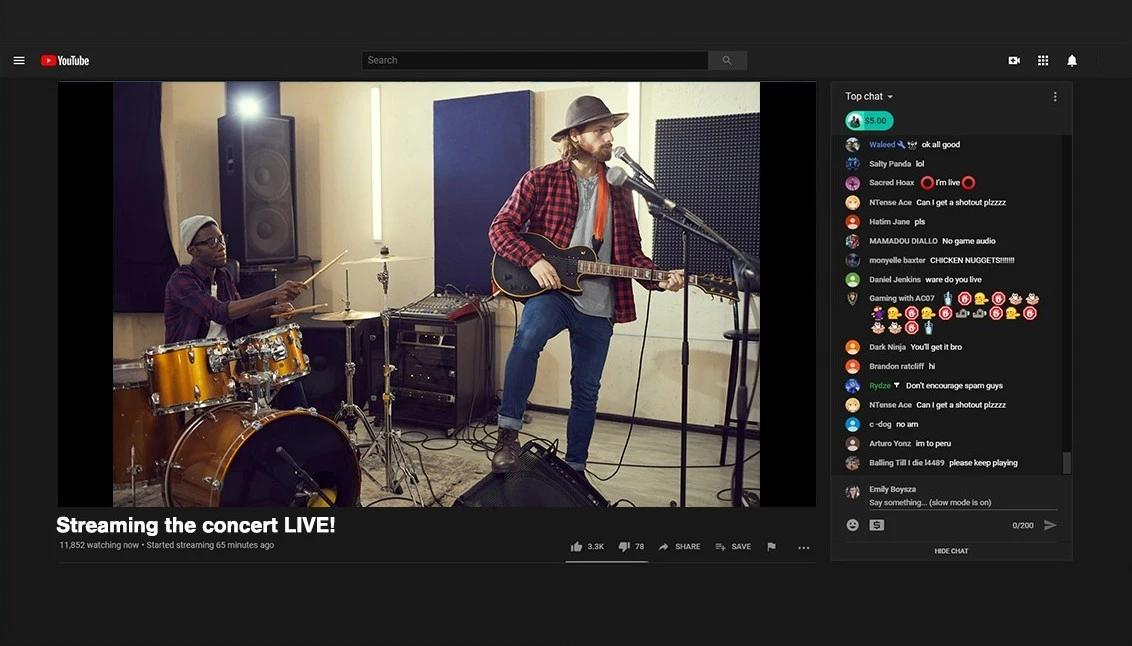
YouTube Live offers a range of benefits that make it an ideal platform for live-streaming events to a broad, potentially unlimited audience. As a free platform, it’s accessible to creators of all levels, from small businesses to large organizations.
YouTube Live’s integration with the platform’s recommendation algorithms means that your stream may appear in the feeds of subscribers, past viewers, and users with similar interests, maximizing your reach and helping attract new viewers organically.
Engagement tools, like live chat, allow for real-time interaction with viewers, enhancing the audience experience and building a sense of community. Additionally, YouTube provides valuable moderation tools to help creators manage the live chat and ensure a safe, inclusive environment for all participants, making it easier to keep the conversation positive and focused.
These features, combined with YouTube’s extensive analytics, help creators refine future content and increase audience retention, making it a powerful tool for live events.
Pros:
- Access to a vast user base, enhancing potential viewership.
- Videos are indexed on Google, improving discoverability.
- Offers various ways to monetize, including Super Chats and memberships.
Cons:
- The interface can be overwhelming for new users.
- Many creators can make it hard to stand out.
2. Facebook Live
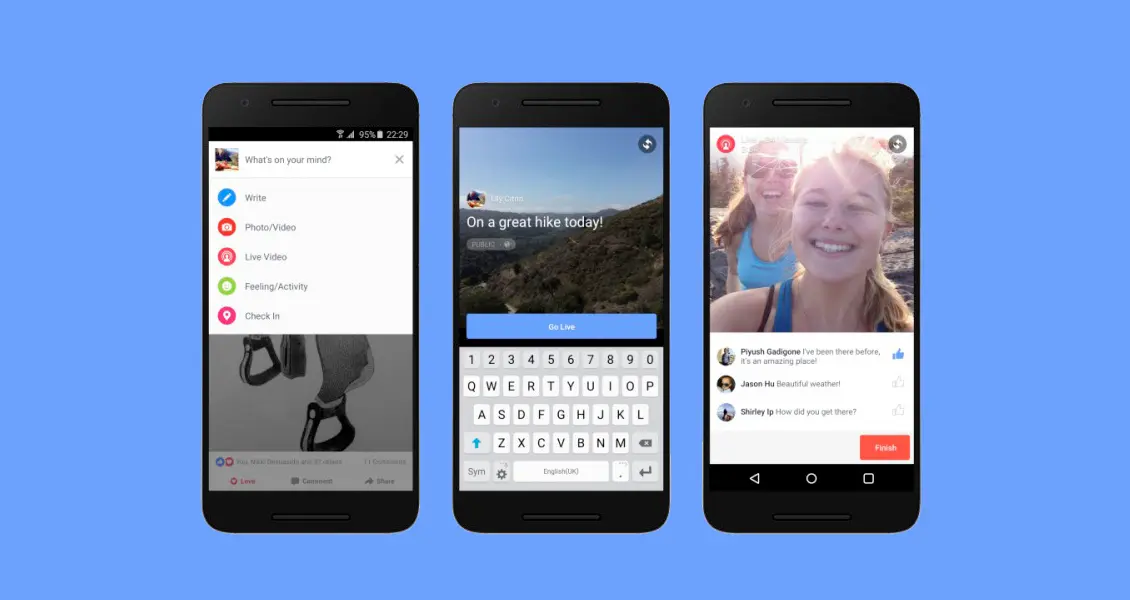
Streaming through Facebook Live is easy with either a mobile device or computer, making it accessible for users of all technical levels.
A standout feature is the interactive live chat, where hosts can respond to questions and comments in real time, making it ideal for events like Q&As, demonstrations, and tutorials that benefit from audience engagement.
Once the live broadcast concludes, the video is automatically saved to your Facebook Page, enabling viewers to replay and share the content, which extends the event’s reach well beyond the initial audience.
Facebook Live’s powerful reach, coupled with its built-in engagement tools, makes it an effective platform for creating lasting content that resonates with both current followers and new viewers.
Pros:
- Leverages existing follower base for better engagement.
- Offers live comments and reactions to foster real-time engagement.
- Easy to promote events on the platform prior to going live.
Cons:
- Posts may not reach all followers due to Facebook’s algorithm.
- Users often scroll past live videos, affecting viewership.
3. Twitch
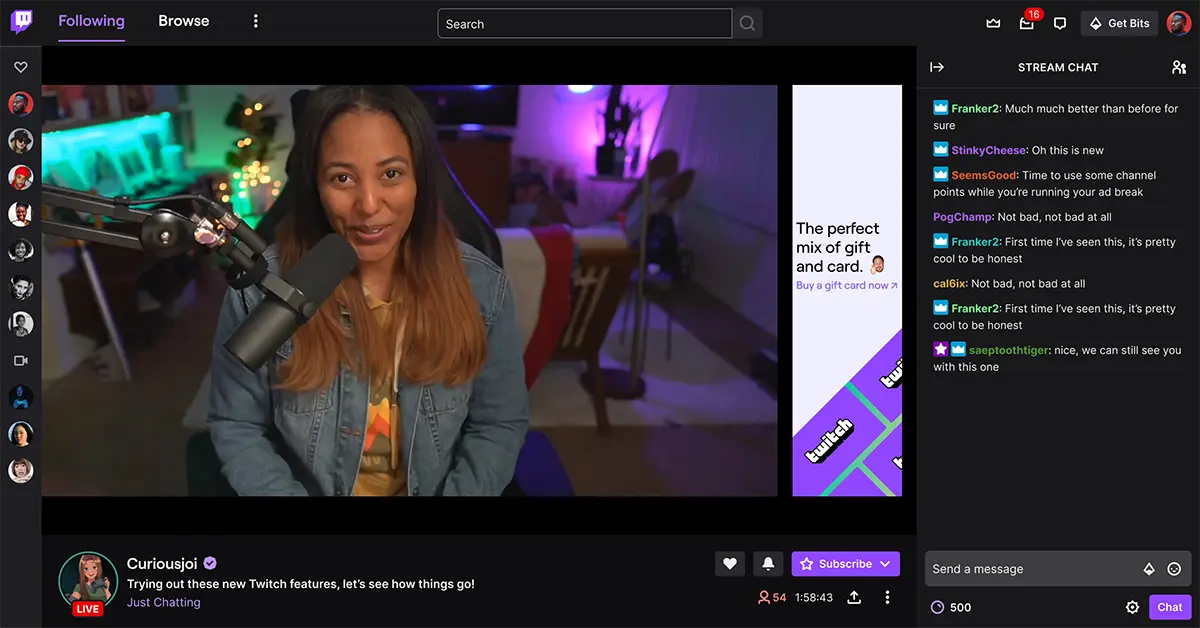
When it comes to live streaming platforms, there's none more popular with gamers and creators than Twitch.
Known primarily for video game streaming, Twitch is also an excellent platform for hosting a variety of events, including concerts, talk shows, and podcasts.
One of Twitch's main advantages is its highly interactive chat feature, allowing streamers to engage directly with viewers by answering questions, responding to comments, and fostering a sense of community in real time.
The platform also offers extensive customization options, like overlays, graphics, and sound effects, which help create a unique and entertaining viewing experience.
Additionally, Twitch includes promotional tools to boost your event’s visibility, such as hosting other streamers to reach wider audiences, creating highlight reels to showcase event moments, and easily sharing streams on social media.
These features, combined with Twitch's dedicated community, make it an ideal platform for engaging, dynamic live events that go beyond gaming.
Pros:
- Strong focus on audience engagement through chat.
- Highly popular among gamers, making it ideal for gaming events.
- Offers subscriptions, donations, and sponsorships.
Cons:
- Primarily attracts gaming enthusiasts, not suitable for all event types.
- New streamers may find it hard to gain visibility.
4. Instagram Live
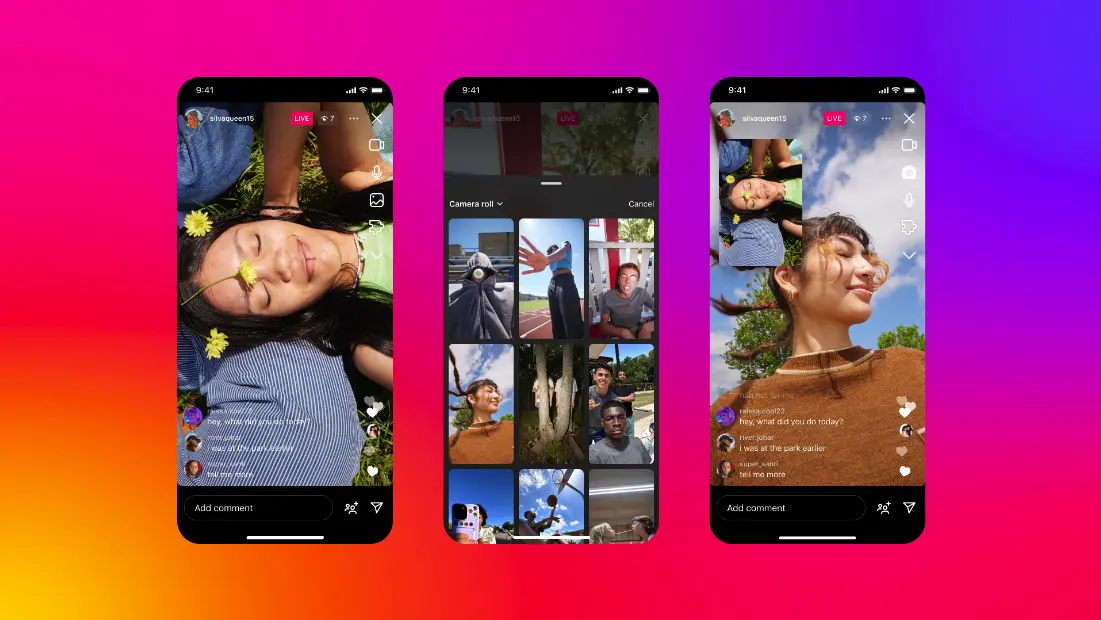
With a simple swipe and tap, users can go live instantly on Instagram, making it perfect for on-the-go broadcasts that capture spontaneous moments or share real-time updates.
Instagram Live is particularly popular for eCommerce and content creators, as it allows businesses to link directly to shoppable products, making it an ideal platform for product demos, Q&As, and promotions.
Viewers can engage through real-time comments and reactions, enhancing the interactive feel of the stream. Instagram Live also offers tools like Stories integration, where users can share previews or save live streams for followers to view later.
Although not built for high-production value content, Instagram Live excels as an accessible, visually engaging tool for reaching a wide audience quickly.
Pros:
- Popular among younger audiences, fostering interaction through comments and reactions.
- Easy to promote live streams through Stories.
- Simple interface for seamless broadcasting.
Cons:
- Limited to one-hour live sessions.
- Live videos disappear after the stream, unlike other platforms where they can be archived.
5. TikTok Live Studio
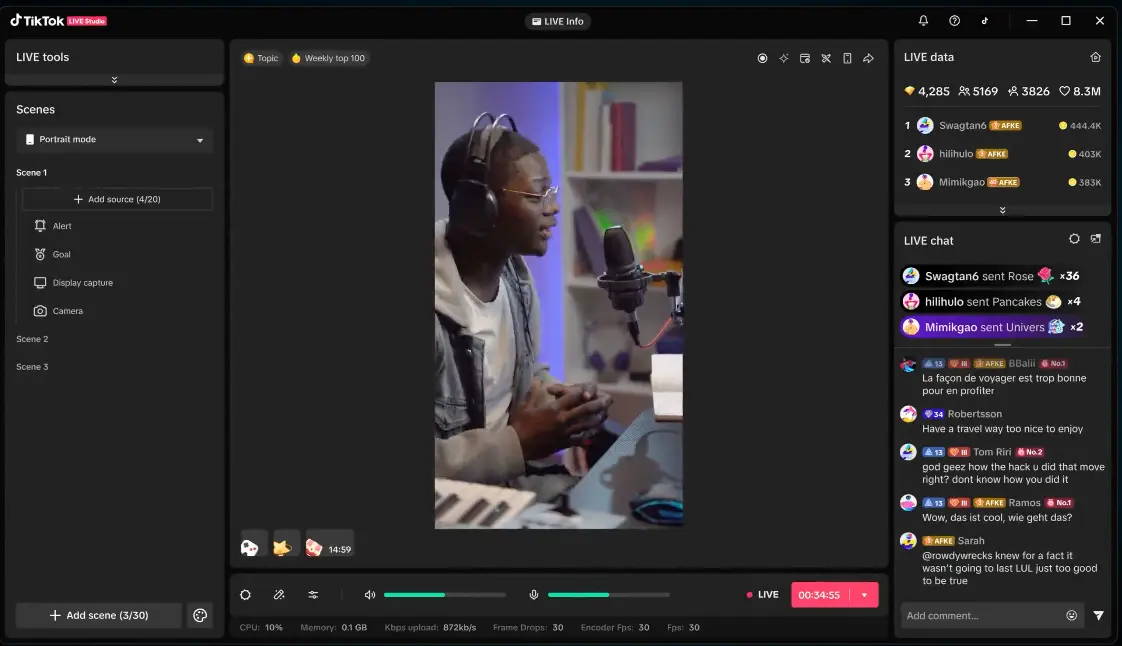
TikTok Live is an interactive platform where creators can engage with audiences in real time, making it ideal for casual broadcasts, gaming content, live shows, and Q&A sessions.
With TikTok Live Studio, Windows users can elevate their live streaming experience by incorporating features like multi-guest hosting, chat moderation, co-hosting, and exclusive effects.
TikTok Live Studio allows for more personalized streams, supporting gaming content and other live event styles through features like viewer rankings, countdown widgets, and real-time analytics, ensuring creators never miss a comment, Gift, or new follower.
While most users need 1,000 followers to unlock live streaming, non-gaming creators in the U.S. may need 10,000, but once live, they can use TikTok’s unique LIVE goal, text poll, and subscription features for boosted engagement.
Pros:
- High visibility on the For You Page with rapid audience growth potential
- Exclusive engagement tools like co-hosting, multi-guest, and LIVE goal tracking
- Real-time analytics and interactive widgets enhance viewer experience
Cons:
- Requires a high follower count for access (1,000 or 10,000 based on content type)
- Limited to Windows users for TikTok Live Studio
- Strict moderation and privacy policies
6. Vimeo
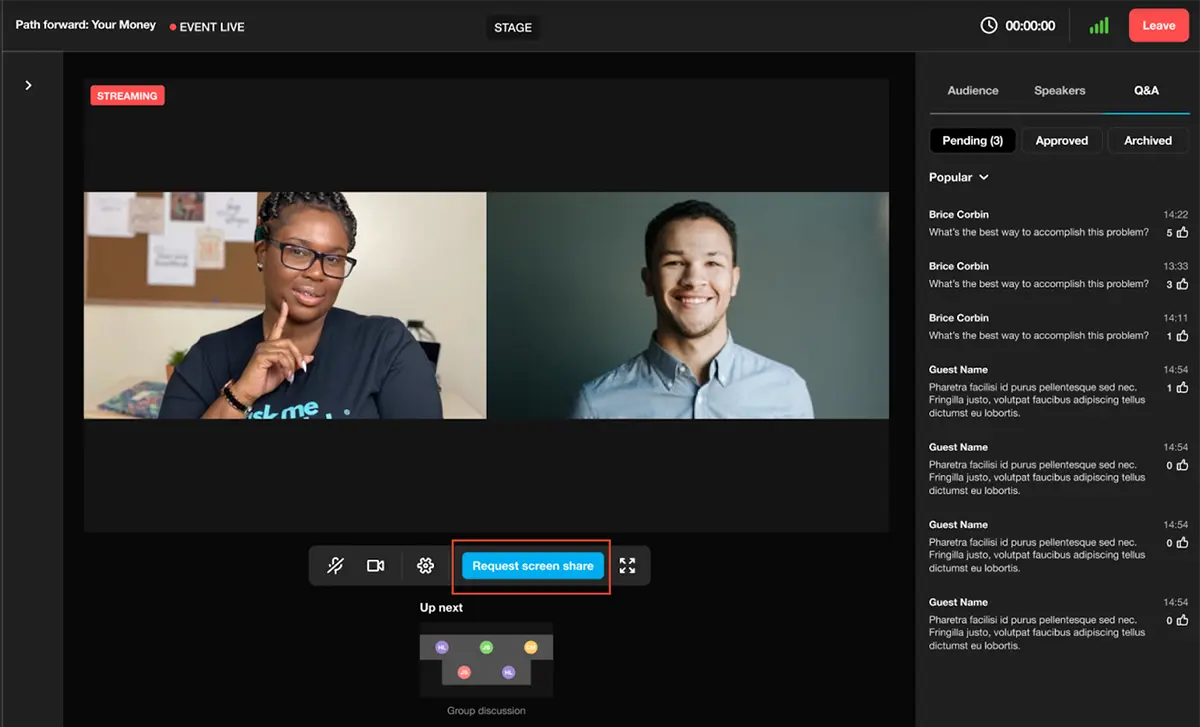
When it comes to high-quality, professional live streaming, Vimeo stands out as an excellent platform for content creators and businesses alike.
Vimeo’s streaming service is known for its focus on providing a professional and customizable viewer experience, ideal for events such as corporate conferences, webinars, and virtual panels.
One of Vimeo’s standout features is its ad-free environment, which ensures an uninterrupted experience for your audience. The platform also offers advanced privacy controls, allowing you to stream to a specific audience with password protection or embedding restrictions, making it an ideal choice for private events.
Streamers benefit from powerful analytics tools to track engagement, watch time, and geographic data, enabling you to refine your strategy for future streams.
Additionally, Vimeo allows extensive branding and customization, including the ability to add logos, colors, and graphics, helping create a cohesive, branded experience.
Pros:
- Known for professional-grade, ad-free video quality.
- Advanced privacy features for secure streaming.
- Extensive customization options to match brand identity.
Cons:
- Paid platform, which may be limiting for budget-conscious users.
- Smaller built-in audience compared to platforms like YouTube or Twitch.
7. LinkedIn Live
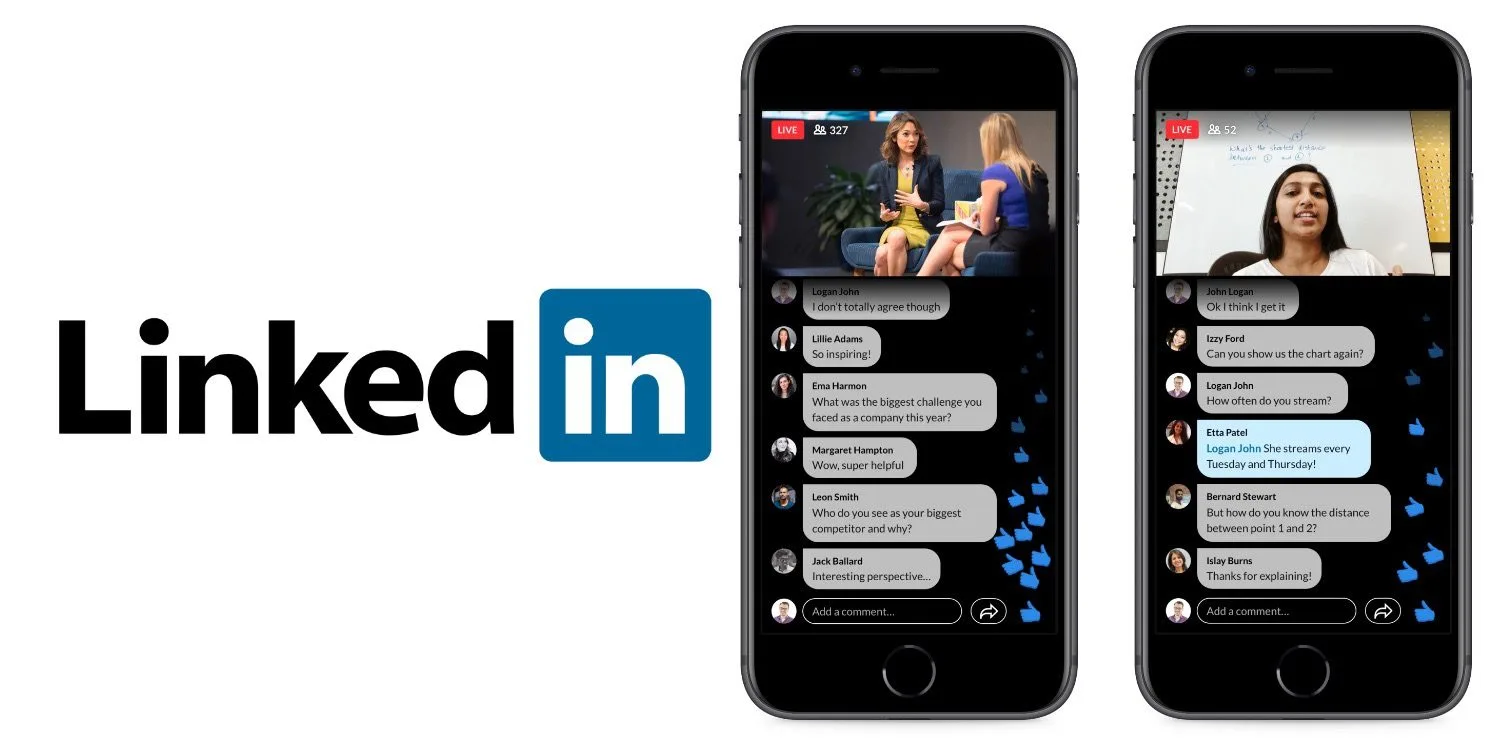
LinkedIn Live is a powerful platform tailored for professional live streaming, allowing brands and individuals to connect directly with a business-focused audience.
Ideal for virtual networking events, industry panels, and webinars, LinkedIn Live enables streamers to reach a specific, highly targeted audience of professionals and industry peers.
To broadcast on LinkedIn Live, users need either a custom RTMP setup or the support of a third-party streaming platform, such as Dacast, which ensures high-quality streaming and additional control.
One standout feature is LinkedIn’s exclusive approval process for live streaming, which makes it a trusted, curated space for professional content.
It also integrates seamlessly with LinkedIn Events, giving users a robust toolkit for promoting their stream, scheduling virtual events, and boosting engagement through targeted notifications to followers.
This platform is ideal for building brand awareness, establishing thought leadership, and fostering professional relationships, but it is best suited for those looking to connect within a specific, business-oriented network.
Pros:
- Ideal for business-related events and networking opportunities.
- Reaches a professional demographic, enhancing relevance.
- Connects with LinkedIn Events for promotion.
Cons:
- Fewer interactive features compared to other platforms.
- Must meet certain criteria to access LinkedIn Live.
Transform Your Live Streaming with Fourthwall!
Elevate your live streaming experience and engage your audience like never before with Fourthwall. Designed to help creators turn their streams into profitable, interactive events, Fourthwall offers powerful tools that boost engagement and streamline the setup process.
With Fourthwall, you can integrate real-time stream alerts through StreamElements and StreamLabs, displaying purchase events and membership subscriptions during your broadcast to celebrate your supporters live. Here’s how it works:
- Engage with Stream Alerts: Fourthwall’s integration with StreamElements and StreamLabs allows you to display custom alerts for purchases and memberships on any platform, making every sale a moment of celebration. These notifications enhance interaction, encourage more support, and provide a personalized touch that keeps fans engaged.
- Customize Your Alerts: Tailor your alert messages, images, and sounds to align with your brand. Set up custom messages for purchases and membership subscriptions, and use dynamic variables like customer names and purchase details to create unique, engaging alerts that resonate with your audience.
- Easy Integration Setup: Connect StreamElements or StreamLabs directly through your Fourthwall dashboard under the "Apps" tab. The setup process is straightforward, allowing you to seamlessly enable purchase and membership alerts without technical hassle.
Beyond alerts, Fourthwall offers creators even more to transform their live streaming events:
- Custom Shop Builder: Use Fourthwall’s no-code website builder to create a unique storefront that showcases your brand, socials, and recent videos—all in one place. Easily design and sell high-quality, custom merch that fans can buy directly from your live stream.
- High-Quality Products: Choose from a vast catalog of print-on-demand and exclusive merch options, ensuring your products meet the highest standards while you set your own prices and margins.
- Analytics and Support: Track viewer behavior and purchasing trends with Fourthwall’s in-depth analytics, allowing you to tailor future streams and products to better meet your audience’s interests. Plus, Fourthwall offers dedicated customer support, handling order issues and helping you reach your goals.
With Fourthwall, you’re equipped to turn your live streams into engaging, revenue-generating events that enhance your brand and foster a dedicated community. Join now and discover how easy it is to build a thriving streaming experience with Fourthwall!
Frequently Asked Questions
What platform should I use for live streaming my event?
The best platform for live streaming your event depends on your target audience and the features you need.
If you’re looking for a platform with broad accessibility and robust search functionality, YouTube Live is a great option, offering high-quality video, monetization features, and vast reach through its recommendation algorithm.
Facebook Live, on the other hand, is excellent for fostering community engagement, allowing you to reach a network of followers with interactive tools like live comments, reactions, and group sharing, ideal for social engagement.
For a younger audience or creative content, TikTok Live or Instagram Live might be ideal, each offering tools like real-time reactions, effects, and product tagging for added engagement.
Finally, if you’re targeting a professional audience, LinkedIn Live provides a more focused platform tailored to business-oriented content and networking.
How can I ensure the quality of my livestream?
To ensure the quality of your livestream, start by testing all equipment, including cameras, microphones, and lighting, well before the event to confirm they’re functioning correctly.
Check your internet connection speed and stability; ideally, use a wired Ethernet connection with an upload speed of at least 5 Mbps for HD or 10 Mbps for 4K streaming.
Run a dress rehearsal to verify video and audio quality, practice transitions, and get familiar with your streaming software to prevent technical issues.
This rehearsal also allows you to fine-tune elements like lighting angles, audio levels, and any on-screen graphics, ensuring a seamless, professional experience once you go live.
Can I monetize my live stream?
Yes, live streaming offers several monetization options, allowing creators to earn revenue directly from their events.
You can charge viewers for access by selling tickets, particularly useful for exclusive content or special events, where audiences are willing to pay for VIP experiences, behind-the-scenes access, or early releases.
Sponsorships are another effective route; partnering with brands to feature their products or ads during the stream can generate substantial income, especially if your audience aligns with the sponsor’s target demographic.
Merchandise sales are a popular choice, as you can promote branded items or exclusive products directly during the event, with platforms like Facebook Live, Instagram Live, and TikTok Live offering in-stream shopping links.
Additionally, platforms like YouTube Live and Twitch provide built-in monetization features such as ad revenue, Super Chats (paid messages that are highlighted in the chat), and subscription options, making it easy to earn directly from viewer engagement.
These diverse methods allow creators to tailor their monetization strategy to fit their content and audience, maximizing the potential revenue from each live stream.

